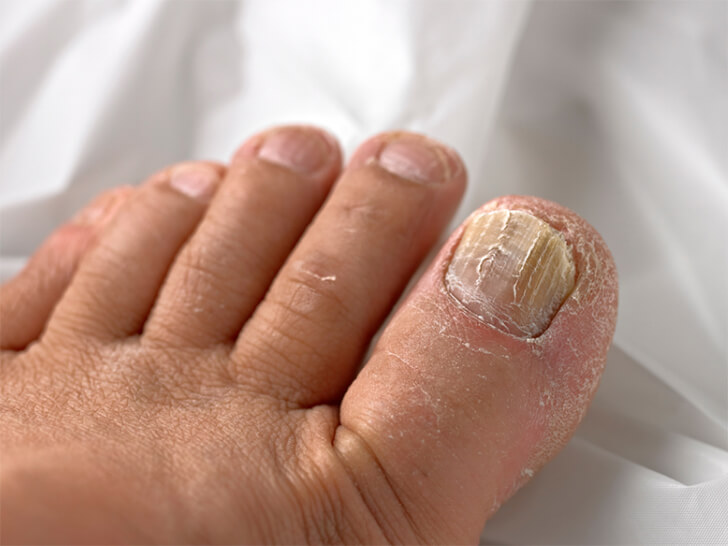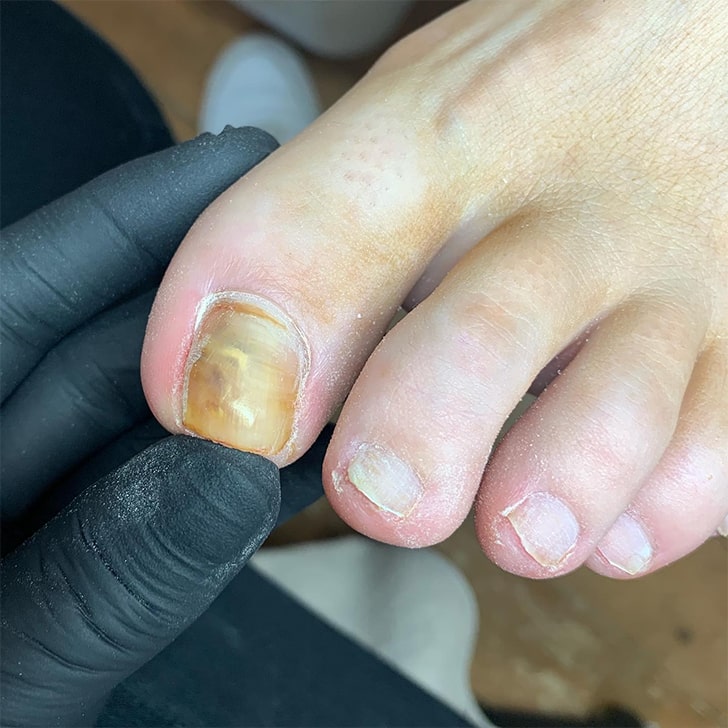Toenail fungus — it’s not the most glamorous topic, but it’s an issue that many of us will face at one time or another. So let's walk through this, no pun intended, and find out what toenail fungus is, what causes it, and most importantly, the best treatments to bid it goodbye in 2023.
An Unwelcome Guest: Toenail Fungus Explained
Let's get up close and personal with toenail fungus. The culprit behind this unsightly condition is usually a type of fungus called dermatophyte. But, molds and yeasts can also join the party. These microorganisms love warm, moist environments, and your shoes provide the perfect home for them to thrive.

Brenda Hosey / Flickr
When they move in, you’ll start noticing changes to your toenails. They might become thicker, change color, develop a foul odor, or even start to crumble. It's not the look or smell anyone is going for, and it can also be quite uncomfortable.
Unpacking the Best Treatments for Toenail Fungus
In 2023, the market is brimming with products designed to tackle toenail fungus. But, not all treatments are created equal. Some are topical applications that you paint onto the nail, while others are oral medications. Let's look at what's trending.

@feet.retreat.lossiemouth / Instagram
- Antifungal Creams and Ointments: These are applied directly to the nail and surrounding skin. Look for products containing active ingredients like terbinafine or clotrimazole, which are known to combat toenail fungus effectively.
- Medicated Nail Polish: Yes, this is a thing. This antifungal polish is painted onto the nail, where it slowly releases the medication over time.
- Oral Antifungal Drugs: When the infection is severe or the topical treatments aren't quite cutting it, oral medications might be the way to go. They are typically more effective but can come with side effects, so a discussion with a healthcare professional is essential.
- Medicated Nail Creams: These are applied to the nail after soaking, allowing the cream to penetrate the nail and tackle the fungus.
- Laser and Light-based Therapies: A high-tech solution for stubborn infections. These treatments use light or heat to kill the fungus.
Finding the Best Toenail Fungus Treatment for You
Choosing a suitable toenail fungus treatment isn't as straightforward as picking out a pair of shoes - various factors need to be weighed in.
Effectiveness
Start by checking the success rates of potential treatments. Read customer reviews, check ratings, and look at clinical studies. Some products or treatments may have rave reviews for mild cases, but may not pack enough punch for severe infections.
Severity of the Fungus
Mild infections usually respond well to topical treatments like creams and medicated nail polish. However, more severe or persistent infections may require oral medications or even laser treatments. The more widespread the fungus, the more aggressive the treatment you'll need.
Location of the Fungus

@aestheticdoctors / Instagram
If the fungus is on the surface of the nail or has infected a small portion of the nail, topical treatments might do the trick. But if the fungus is under the nail or has infected the nail bed, it becomes trickier for the treatment to reach it, and oral medications or advanced therapies might be necessary.
Side Effects
Every treatment has potential side effects. While most topical treatments usually cause minimal side effects, oral medications can sometimes lead to liver damage or skin rashes. Weigh the potential risks and side effects against the benefits.
Speed of Results
Toenail fungus is notoriously slow to clear up. Even with treatment, it can take months to see significant improvement. However, certain treatments can work faster than others. If speed is essential, look for a treatment known for its quick action.
Ease of Use
The best treatment is one that you'll actually use consistently. A cream that needs to be applied multiple times a day might work well, but if your busy schedule means you'll forget half the applications, it's not the best option for you.
Cost

Toenail Fungus Laser Removal / Flickr
Budget can be a crucial factor. Prescription medications, over-the-counter topical treatments, and high-tech therapies like laser treatments vary widely in price. Insurance coverage also varies, with most plans more likely to cover prescription medications than high-tech therapies.
Remember, while there are plenty of over-the-counter treatments available, a healthcare professional should ideally guide the treatment of toenail fungus. They can assess the severity of your infection, take your overall health into account, and make a recommendation based on these factors. With the right treatment in your arsenal, you'll be well on your way to reclaiming your healthy nails.
show more






















